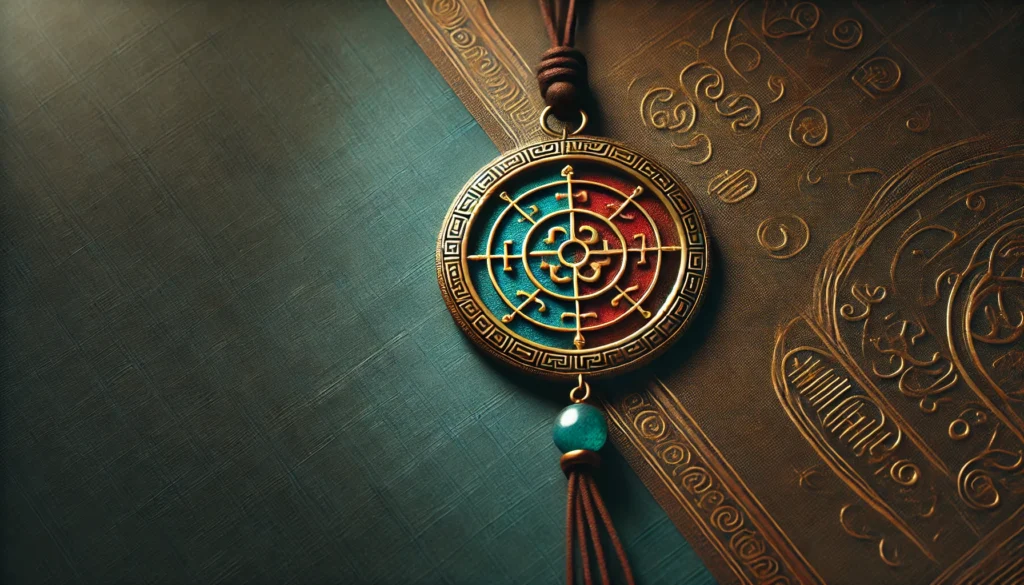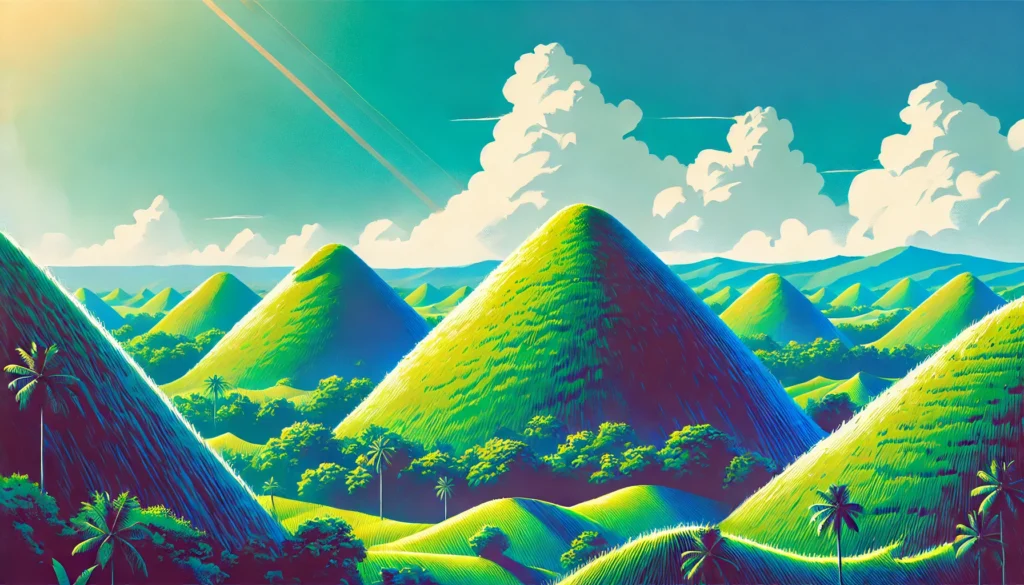Have you ever gazed upon a landscape so breathtaking that it seemed to whisper ancient tales of love and loss? Picture this: a perfectly conical volcano rising majestically from the lush Philippine countryside, its slopes draped in emerald forests and its peak often shrouded in wispy clouds. This is Mayon Volcano, a natural wonder that has captivated hearts and minds for centuries. But there’s more to this stunning landmark than meets the eye. Behind its awe-inspiring beauty lies a legend so poignant, so heart-wrenching, that it has become an integral part of Filipino folklore.
As I stand here, looking up at the imposing silhouette of Mayon Volcano, I can’t help but feel a sense of connection to the countless generations who have shared this view. The air is thick with history, and the gentle breeze seems to carry whispers of a love story that has endured through the ages. Join me as we delve into the legend of Mayon Volcano, a tale that intertwines the raw power of nature with the enduring strength of human emotion.
The Origins of the Legend
A Tale as Old as Time
The legend of Mayon Volcano is deeply rooted in the rich tapestry of Philippine mythology. Like many folkloric tales, it has been passed down through generations, evolving and adapting with each retelling. The story centers around two star-crossed lovers, Magayon and Panganoron, whose tragic fate is said to have given birth to the volcano we see today.
As I researched this legend, I was struck by how it reflects the deeply ingrained values of Filipino culture. The themes of love, sacrifice, and the interconnectedness of humans and nature are woven throughout the narrative, offering us a glimpse into the collective psyche of the Philippine people. It’s a testament to the power of storytelling and how myths can shape our understanding of the world around us.
The Setting: Albay Province
To truly appreciate the legend of Mayon Volcano, we need to understand its setting. Mayon is located in Albay Province, in the Bicol Region of Luzon Island, Philippines. This area is known for its stunning natural beauty, with verdant landscapes, pristine beaches, and of course, the iconic Mayon Volcano dominating the skyline.
Albay has a rich history dating back to pre-colonial times. The indigenous Bicolano people have inhabited this region for centuries, developing a unique culture and a deep connection to the land. It’s within this context that the legend of Mayon Volcano was born, blending local beliefs with the awe-inspiring presence of the volcano itself.
The Characters: Magayon and Panganoron
Magayon: The Beautiful Princess
At the heart of our story is Magayon, whose name literally means “beautiful” in Bicolano. As the daughter of Makusog, the chief of the Rawis tribe, Magayon was renowned throughout the land for her unparalleled beauty and kind heart. I can almost picture her, with flowing ebony hair and eyes that sparkled like the stars, captivating everyone who crossed her path.
But Magayon was more than just a pretty face. Legend has it that she possessed a wisdom beyond her years and a deep love for her people. She was the pride of her father and the joy of her tribe, embodying the best qualities of her people. It’s no wonder that her beauty and character would attract suitors from far and wide.
Panganoron: The Mysterious Warrior
Enter Panganoron, whose name means “cloud” in Bicolano. He was a warrior from a neighboring tribe, known for his bravery and strength. Unlike the other suitors who vied for Magayon’s hand, Panganoron was different. He wasn’t interested in her beauty alone but was drawn to her spirit and intelligence.
I find Panganoron’s character fascinating. In many versions of the legend, he’s portrayed as a humble and honorable man, willing to risk everything for love. His name, meaning “cloud,” seems fitting for someone who would eventually be eternally linked to a volcano that often has its peak hidden in the clouds.
The Love Story Unfolds
A Chance Encounter
Like many great love stories, the tale of Magayon and Panganoron begins with a chance encounter. One day, while Magayon was bathing in the Yawa River, she slipped and was nearly swept away by the strong current. Panganoron, who happened to be nearby, heard her cries for help and rushed to her rescue.
As I imagine this scene, I can almost feel the rush of the river and the panic Magayon must have felt. And then, the relief and gratitude as Panganoron pulled her to safety. It’s in these moments of vulnerability that true connections are often formed, and for Magayon and Panganoron, this was the beginning of a love that would become legendary.
Blossoming Romance
Following their dramatic first meeting, Magayon and Panganoron began to spend more time together. They would take long walks through the lush forests surrounding their villages, sharing stories and dreams. Their love blossomed like the vibrant flowers that dotted the landscape, pure and beautiful.
What strikes me about this part of the legend is how relatable it feels. Despite being set in a time long past, the story of two young people falling in love resonates across centuries. It reminds us that at our core, human emotions remain constant, transcending time and culture.
The Proposal and Engagement
As their love grew stronger, Panganoron decided to ask for Magayon’s hand in marriage. Following the customs of their time, he approached Makusog, Magayon’s father, to seek his blessing. Impressed by Panganoron’s character and seeing the happiness he brought to his daughter, Makusog gladly gave his consent.
The engagement of Magayon and Panganoron was cause for great celebration. The entire tribe rejoiced, seeing in their union the promise of a bright future. Little did they know that their joy would soon be shattered by the arrival of an unexpected and unwelcome suitor.
The Conflict: Enter Pagtuga
A Rival Emerges
Just as Magayon and Panganoron were planning their future together, a dark cloud appeared on the horizon in the form of Pagtuga, the datu (chief) of the Iriga tribe. Pagtuga had long desired Magayon for himself, attracted by her legendary beauty and the political advantages of allying with her tribe.
When news of Magayon’s engagement reached Pagtuga, he was consumed by jealousy and rage. In his mind, he believed that he alone was worthy of Magayon’s hand. This part of the legend serves as a stark reminder of how destructive emotions like jealousy and possessiveness can be, capable of tearing apart lives and communities.
The Ultimatum
Refusing to accept defeat, Pagtuga decided to take matters into his own hands. He gathered his warriors and marched to Rawis, the village of Magayon and her father. There, he issued an ultimatum: either Magayon would be given to him in marriage, or he would wage war on their tribe.
I can only imagine the fear and tension that must have gripped the village at that moment. Pagtuga’s threat put Makusog in an impossible position, forced to choose between his daughter’s happiness and the safety of his people. It’s a scenario that highlights the often-cruel nature of power and the heavy burden of leadership.
A Father’s Dilemma
Makusog was torn. On one hand, he had given his blessing to Magayon and Panganoron’s union and wanted nothing more than his daughter’s happiness. On the other hand, he had a responsibility to protect his tribe from the threat of war. The weight of this decision must have been immense, and it’s a testament to the complexity of the legend that it doesn’t shy away from such difficult moral quandaries.
In many versions of the story, Makusog initially tries to reason with Pagtuga, hoping to find a peaceful solution. But Pagtuga’s obsession with Magayon blinds him to any compromise. As the tension mounts, it becomes clear that this conflict can only end in tragedy.
The Climax: Tragedy Strikes
The Battle Begins
Unable to dissuade Pagtuga from his course of action, and unwilling to sacrifice his daughter’s happiness, Makusog made the difficult decision to stand his ground. As Pagtuga’s warriors descended upon the village, Panganoron rallied the men of Rawis to defend their home and their future.
The battle that ensued was fierce and chaotic. I can almost hear the clash of weapons, the shouts of warriors, and the cries of the villagers caught in the crossfire. It’s a vivid reminder of the brutal reality that often lurks behind romantic legends, the human cost of love and war intertwined.
A Desperate Act
As the fighting raged on, Pagtuga saw an opportunity. In a moment of desperation and cunning, he managed to slip away from the battlefield and make his way to Makusog’s house, where Magayon was being kept safe. Seeing his chance, Pagtuga kidnapped Magayon, intending to flee with her as his prize.
This turn of events adds another layer of tension to the story. Suddenly, the stakes are raised even higher, with Magayon’s very freedom hanging in the balance. It’s a plot twist that would keep any audience on the edge of their seats, proving that good storytelling is truly timeless.
The Ultimate Sacrifice
Word of Magayon’s kidnapping quickly reached Panganoron. Without hesitation, he abandoned the main battle to chase after Pagtuga and rescue his beloved. What followed was a desperate pursuit through the forests and hills surrounding the village.
Finally, Panganoron caught up with Pagtuga. The two men engaged in a fierce one-on-one combat, each fighting for Magayon and their own vision of the future. In a tragic twist of fate, just as Panganoron gained the upper hand and was about to defeat Pagtuga, a stray arrow from the ongoing battle struck him in the back.
As Panganoron fell, mortally wounded, Magayon broke free from her captor. In a moment of despair and devotion, she grabbed Panganoron’s dagger and took her own life, unable to bear the thought of living without her true love. Pagtuga, seeing that he had lost everything he had fought for, fell upon his own sword in defeat.
The Birth of Mayon Volcano
Nature’s Response
The legend tells us that as Magayon and Panganoron’s blood seeped into the earth, the ground began to tremble. The sky darkened, and a great rumbling could be heard from deep within the earth. It was as if nature itself was responding to the tragic loss of these star-crossed lovers.
Slowly at first, then with increasing speed, the earth began to rise. Rocks and soil piled up, higher and higher, forming a great mound over the bodies of Magayon and Panganoron. As the villagers watched in awe and fear, this mound grew into a mountain, its slopes smooth and steep, culminating in a perfect cone at the top.
The Eternal Embrace
Thus, according to legend, Mayon Volcano was born. The perfectly conical shape of the volcano is said to represent Magayon’s beauty, while the clouds that often shroud its peak are believed to be Panganoron, forever embracing his beloved.
This poetic transformation of tragedy into natural beauty is what makes the legend of Mayon Volcano so powerful. It speaks to our human desire to find meaning in the face of loss, to see the eternal in the ephemeral. The volcano stands as a testament to the enduring power of love, a monument that has outlasted kingdoms and civilizations.
The Legacy of the Legend
Cultural Impact
The legend of Mayon Volcano has had a profound impact on the culture of the Bicol region and beyond. It has inspired countless works of art, literature, and music. Local festivals often include retellings of the story, keeping the legend alive for new generations.
One of the most significant cultural impacts of the legend is how it has shaped the way people view Mayon Volcano. Rather than seeing it solely as a potentially destructive force of nature, many Bicolanos view the volcano with a mix of reverence and affection, seeing in its perfect slopes the eternal love of Magayon and Panganoron.
Tourism and Economy
The allure of Mayon Volcano, enhanced by its legendary status, has made it a major tourist attraction. Visitors from all over the Philippines and around the world come to Albay to see the “perfect cone” and learn about its romantic origin story.
This tourism has had a significant impact on the local economy. Many businesses have sprung up to cater to visitors, from tour guides offering treks up the volcano’s slopes to souvenir shops selling Mayon-themed merchandise. In this way, the legend continues to provide for the people of Albay, much as Magayon once cared for her tribe.
Mayon Volcano: Fact and Fiction
While the legend of Magayon and Panganoron is a beautiful story, it’s important to also understand the scientific facts about Mayon Volcano. Let’s take a look at some key information:
| Aspect | Details |
|---|---|
| Location | Albay Province, Bicol Region, Luzon Island, Philippines |
| Type | Stratovolcano |
| Elevation | 2,462 meters (8,077 feet) above sea level |
| Base diameter | 16 km (10 miles) |
| Oldest known eruption | 1616 |
| Most recent eruption (as of 2016) | January 2014 |
| Number of recorded eruptions | 51 (between 1616 and 2016) |
| Protected status | Mayon Volcano Natural Park (established 2000) |
Mayon is one of the most active volcanoes in the Philippines, known for its near-perfect conical shape. Its name is derived from the Bicolano word “magayon,” meaning beautiful, which ties into our legend nicely.
The Volcano’s Continuing Story
Recent Activity
While our legend ends with the creation of the volcano, Mayon’s story continues to unfold. The volcano remains active, with regular eruptions that both awe and concern the local population. Each eruption adds another chapter to Mayon’s ongoing narrative, a reminder that nature, like love, is both beautiful and potentially dangerous.
In recent years, scientists have been closely monitoring Mayon’s activity. Advanced technology allows for better prediction of eruptions, helping to keep local communities safe. It’s a fascinating blend of ancient legend and modern science, both attempting to understand and respect this magnificent force of nature.
Conservation Efforts
Recognizing the importance of Mayon Volcano, both culturally and ecologically, efforts have been made to protect it and its surrounding areas. In 2000, Mayon Volcano Natural Park was established, covering an area of 5,775.7 hectares. This park aims to preserve the volcano’s natural beauty and biodiversity while also protecting local communities.
Conservation efforts face challenges, however. The fertile volcanic soil around Mayon is excellent for agriculture, leading to conflicts between farming and preservation. It’s a delicate balance, much like the one Makusog faced in our legend, between immediate needs and long-term protection.
The Enduring Power of Love and Nature
As we come to the end of our journey through the legend of Mayon Volcano, I’m struck by how this ancient tale continues to resonate today. It speaks to universal themes of love, sacrifice, and the profound connection between humans and the natural world. The story of Magayon and Panganoron, tragic as it is, reminds us of the transformative power of love – how it can shape not just our lives, but the very landscape around us.
Moreover, the legend of Mayon Volcano serves as a bridge between past and present. It connects us to the rich cultural heritage of the Philippines while also highlighting the ongoing relationship between the Bicolano people and their environment. In a world that often feels disconnected from nature, stories like this remind us of our place within the grand tapestry of the natural world.
So, the next time you see an image of Mayon Volcano, or if you’re lucky enough to visit it in person, take a moment to remember Magayon and Panganoron. Look for the beauty in its perfect slopes, and the love in the clouds that embrace its peak. And perhaps, in doing so, you’ll feel a connection to the countless generations who have gazed upon this magnificent volcano and shared in its legendary tale.
What legends shape the landscapes of your world? How do the stories we tell reflect our relationship with nature? I invite you to share your thoughts and experiences in the comments below. Let’s keep the tradition of storytelling alive, weaving new threads into the tapestry of human experience.
*Disclaimer: This article is based on




